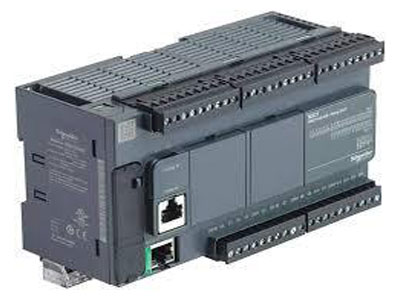What Is The ROI When Upgrading To A More Advanced PLC System?
Key Takeaway
Upgrading to a more advanced PLC system can offer a significant return on investment (ROI). The new system often enhances efficiency, reducing downtime and maintenance costs. Improved processing speeds and better integration with modern technologies can increase productivity. Energy savings from optimized operations contribute to cost reductions. Advanced diagnostics and remote monitoring improve troubleshooting and maintenance, preventing costly breakdowns. While the initial investment might be high, the long-term savings and productivity gains typically justify the upgrade. Enhanced reliability and performance make the investment worthwhile.
Assessing the Need for PLC Upgrades
Before investing in a PLC upgrade, it’s crucial to assess whether your current system meets your operational needs. Look for signs like frequent downtimes, slow processing speeds, and difficulty in integrating new technologies. Aging systems can lead to inefficiencies and increased maintenance costs. Assessing your current setup helps determine if an upgrade is necessary and what specific improvements are needed. For newly joined engineers, understanding these signs and conducting a thorough assessment ensures that the upgrade decision is data-driven and justified.

Benefits of Advanced PLC Systems
Upgrading to an advanced PLC system offers significant benefits. Modern PLCs come with enhanced processing power, enabling faster and more reliable operations. They support better connectivity, including integration with IoT devices and cloud platforms, enhancing data analytics and remote monitoring capabilities.
Advanced PLCs feature improved user interfaces and programming environments, making them easier to use and maintain. These systems also provide superior diagnostic tools, which aid in quick troubleshooting and predictive maintenance, reducing downtime and operational costs.
Additionally, modern PLCs offer greater flexibility and scalability, allowing for seamless upgrades and expansions. By leveraging these advanced features, organizations can improve efficiency, reliability, and overall productivity in their industrial operations.
Calculating the ROI of PLC Upgrades
Calculating the ROI of a PLC upgrade involves comparing the costs of the new system with the expected benefits. Start by considering the initial investment, including hardware, software, and installation costs. Next, estimate the savings from reduced downtimes, lower maintenance costs, and increased production efficiency. Improved energy efficiency and reduced operational risks also contribute to ROI.
Additionally, consider intangible benefits like enhanced data analytics and better compliance with industry standards. By quantifying these factors, you can determine the financial viability and long-term benefits of upgrading to a more advanced PLC system. This comprehensive evaluation helps ensure that the investment is justified and aligned with the organization’s operational goals.
Case Studies of Successful PLC Upgrades
Examining case studies of successful PLC upgrades provides valuable insights. For instance, a manufacturing plant upgraded its PLC system, resulting in a 25% increase in production efficiency and a 30% reduction in downtime. This upgrade not only enhanced productivity but also reduced maintenance costs and operational disruptions.
Another example is a water treatment facility that upgraded to a more advanced PLC. This upgrade led to significant energy savings and improved compliance with environmental regulations. The facility reported better monitoring capabilities and more efficient operations, contributing to overall cost savings and enhanced system reliability.
These examples highlight how strategic PLC upgrades can lead to substantial operational improvements and cost savings. For newly joined engineers, studying these cases offers practical examples of the benefits and ROI of PLC upgrades, demonstrating the tangible impact of modernizing automation systems.
Tips for a Cost-Effective PLC Upgrade
To ensure a cost-effective PLC upgrade, start by clearly defining your upgrade goals and requirements. Conduct a thorough cost-benefit analysis to justify the investment. This analysis should include evaluating the expected improvements in efficiency, reduced downtimes, and potential cost savings.
Choose scalable and flexible systems that can adapt to future technological advancements. This will help ensure your investment remains relevant as technology evolves. Engage with experienced vendors and consultants to ensure the new system meets your specific needs and is implemented correctly.
Implement the upgrade in phases to minimize disruptions to operations. Phased implementation allows for easier troubleshooting and adjustments, reducing the risk of extended downtime.
Lastly, provide adequate training for your team to ensure they can fully utilize the new system’s capabilities. Well-trained staff can maximize the benefits of the upgrade, leading to better performance and quicker ROI.
By following these tips—defining clear goals, conducting cost-benefit analysis, choosing scalable systems, phased implementation, and thorough training—you can achieve a successful and cost-effective PLC upgrade.
Conclusion
Investing in advanced PLC technology can yield significant returns in terms of efficiency, cost savings, and operational improvements. By assessing the need for an upgrade, understanding the benefits, accurately calculating the ROI, and following best practices for a cost-effective upgrade, organizations can make informed decisions that enhance their automation systems. For newly joined engineers, mastering these aspects is crucial for driving technological advancements and achieving long-term success in industrial automation. Upgrading to a more advanced PLC system is not just a financial investment but a strategic move towards greater efficiency and competitiveness.
